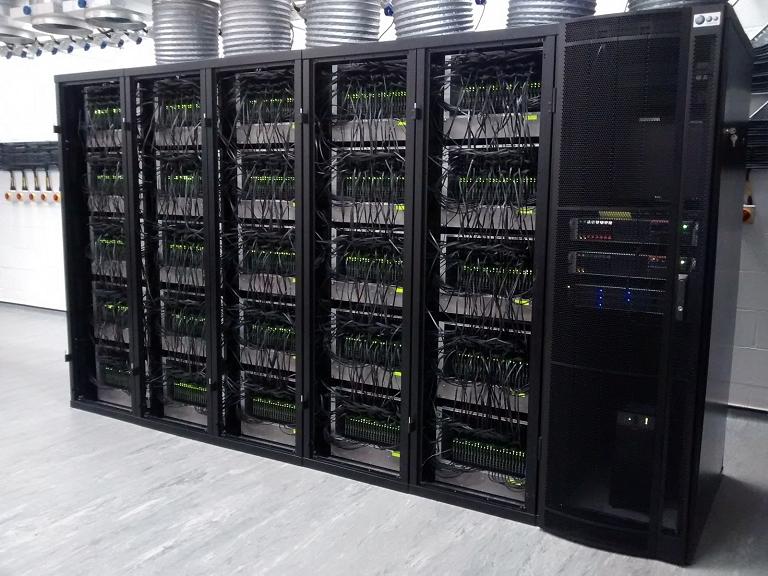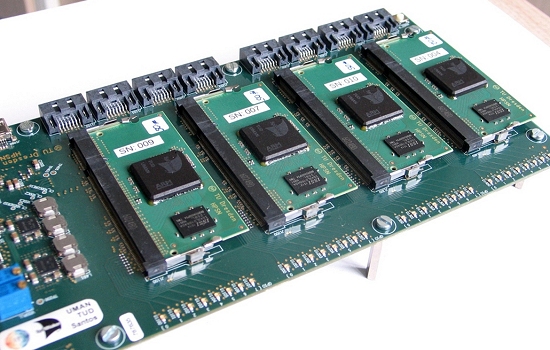TECH

Supercomputer that mimics the human brain is turned on
Spinnaker
The world's largest neuromorphic supercomputer - designed and built to work just like a brain - is being powered up for the first time with no less than a million processor cores.The supercomputer, called Spinnaker, will be able to complete more than 200 million actions per second thanks to no less than one million processor cores, each with 100 million components.Spinnaker is an acronym for Spiking Neural Network Architecture, something like neural network architecture by voltage spikes, in reference to the electrical "shots" of the synapses, that make the communication between the neurons.The project is the hardware part (Neuromorph Computation Platform) of the Human Brain Project.

Neuromorphic supercomputer
SpiNNaker is unique because, unlike traditional computers, it does not communicate by sending large amounts of information from point A to point B over a standard network. Instead, it mimics the massively parallel communication architecture of the brain, sending billions of small amounts of information simultaneously to thousands of different destinations.The team has been working for 20 years on the project, of which 10 were spent designing and another 10 years in the construction of the neuromorphic chips and in their interconnection.With the new machine, the goal is to model up to one billion biological neurons in real time. To get a sense of scale, a mouse brain contains about 100 million neurons, while the human brain is a thousand times larger. That is, a billion neurons are equivalent to about 1% of the human brain, which are interconnected through approximately 1 quadrillion (1 followed by 15 zeros) of synapses."We essentially create a machine that works more like a brain than a traditional computer, which is extremely stimulating." The final goal of the project has always been a million cores on a single computer for real-time brain modeling applications. we've got it, which is fantastic, "said Professor Steve Furber of the University of Manchester in the UK, one of the creators of the supercomputer.Understanding the brainAnd what will a computer with a million processor cores that mimic the way the brain work?Instead of putting the brain in the service of traditional computing, the top priority is the opposite. One of the key uses of Spinnaker will be to help neuroscientists better understand how our own brain works. He will do this.
University of Manchester

No comments:
Post a Comment